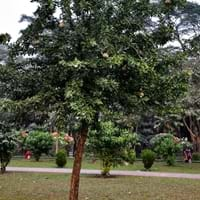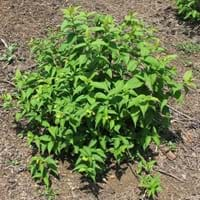Life Span
Perennial
Annual and Perennial
Origin
Bangladesh, India, Pakistan, Sri Lanka, Tropical Indomalaya
North America, United States, Northeastern United States, Mid-Atlantic United States, Southeastern United States, North-Central United States, Canada
Types
Not Available
Diervilla sessilifolia, Diervilla rivularis
Habitat
Dry areas
Forests, Prairies, Roadsides, Wet lands, Woodlands
USDA Hardiness Zone
Not Available
3-7
AHS Heat Zone
Not Available
8-1
Sunset Zone
Not Available
A2, A3, 1a, 1b, 2a, 2b, 3a, 3b, 4, 5, 6, 7, 8, 9
Habit
Not Available
Cushion/Mound-forming
Flower Color
White
Yellow, Orange, Light Yellow, Yellow green
Flower Color Modifier
Not Available
Not Available
Fruit Color
Greyish Brown, Light Green, Not Available
Red
Leaf Color in Spring
Green
Light Green, Bronze
Leaf Color in Summer
Dark Green
Dark Green, Bronze
Leaf Color in Fall
Green
Yellow, Red, Bronze
Leaf Color in Winter
Gray Green
Not Available
Plant Season
Autumn
Spring, Summer, Fall, Winter
Sunlight
Full Sun, Partial Sun
Partial Sun, Partial shade
Growth Rate
Medium
Medium
Type of Soil
Rich
Clay, Loam, Sand
The pH of Soil
Acidic, Neutral
Acidic, Neutral, Alkaline
Soil Drainage
Well drained
Well drained
Bloom Time
Late Fall
Summer
Tolerances
Drought
Drought
Where to Plant?
Ground, Pot
Ground, Pot
How to Plant?
Budding, Layering, root cutting, Seedlings
Cuttings
Plant Maintenance
Low
Medium
Watering Requirements
Do not water excessively
Average Water Needs, Medium
In Summer
Lots of watering
Lots of watering
In Spring
Moderate
Moderate
In Winter
Average Water
Average Water
Soil pH
Acidic, Neutral
Acidic, Neutral, Alkaline
Soil Type
Rich
Clay, Loam, Sand
Soil Drainage Capacity
Well drained
Well drained
Sun Exposure
Full Sun, Partial Sun
Partial Sun, Partial shade
Pruning
Prune after harvesting, Remove dead or diseased plant parts
Prune in early spring, Remove damaged leaves, Remove dead branches, Remove dead leaves, Remove dead or diseased plant parts, Remove shoots
Fertilizers
for fruiting plants, use high phosphorous content fertilizer
10-10-10
Pests and Diseases
Not Available
Red blotch
Plant Tolerance
Drought
Drought
Flower Petal Number
Single
Single
Foliage Texture
Medium
Medium
Foliage Sheen
Matte
Matte
Attracts
Not Available
Birds, Butterflies, Hummingbirds, Not Available
Allergy
Gastric
Avoid during Pregnancy, Poisonous, Toxic
Aesthetic Uses
Not Used For Aesthetic Purpose
Showy Purposes
Beauty Benefits
Good Cleanser
Good for skin
Edible Uses
Yes
Insignificant
Environmental Uses
Not Available
Air purification, soil stabilisation
Medicinal Uses
Blood cleanser, Diabetes, Ear ache, Energy, Kidney problems, Liver Protection, Malaria, Respiratory Disorders, scurvy, Snakebite
Diuretic, Galactogogue, Laxative, Opthalmic
Part of Plant Used
Fruits
Bark, Leaves
Other Uses
Used As Food, Used for its medicinal properties
Used for its medicinal properties
Used As Indoor Plant
No
Yes
Used As Outdoor Plant
Yes
Yes
Garden Design
Edible, Fruit Tree
Container, Foundation, Groundcover, Mixed Border, Rock Garden, Wall
Botanical Name
Limonia acidissima
DIERVILLA lonicera
Common Name
Wood apple, monkey fruit, curd fruit
Northern bush honeysuckle, Low bush honeysuckle, Dwarf bush honeysuckle, Yellow-flowered upright honeysuckle
In Hindi
कबिट
Bush Honeysuckle
Plant
In German
Indischer Holzapfel
Bush Honeysuckle
Pflanze
In French
Kawista
Bush Honeysuckle
Plante
In Spanish
Kawista
Bush madreselva
Planta
In Greek
γλυκό ασβέστη
Μπους Αγιόκλημα
Φυτό
In Portuguese
Limonia
Bush, Honeysuckle
Plantar
In Polish
Feronia słoniowa
Bush Honeysuckle
Roślina
In Latin
dulcis ad cinerem
CISSANTHEMOS Bush
planta
Phylum
Magnoliophyta
Magnoliophyta
Class
Magnoliopsida
Magnoliopsida
Order
Sapindales
Dipsacales
Family
Rutaceae
Caprifoliaceae
Clade
Angiosperms, Eudicots
Angiosperms, Asterids, Eudicots
Tribe
Citreae
Diervilleae
Subfamily
Aurantioideae
Not Available
Number of Species
Not Available
Season and Care of Wood Apple and Bush Honeysuckle
Season and care of Wood Apple and Bush Honeysuckle is important to know. While considering everything about Wood Apple and Bush Honeysuckle Care, growing season is an essential factor. Wood Apple season is Autumn and Bush Honeysuckle season is Autumn. The type of soil for Wood Apple is Rich and for Bush Honeysuckle is Clay, Loam, Sand while the PH of soil for Wood Apple is Acidic, Neutral and for Bush Honeysuckle is Acidic, Neutral, Alkaline.
Wood Apple and Bush Honeysuckle Physical Information
Wood Apple and Bush Honeysuckle physical information is very important for comparison. Wood Apple height is 800.00 cm and width 900.00 cm whereas Bush Honeysuckle height is 10.16 cm and width 10.16 cm. The color specification of Wood Apple and Bush Honeysuckle are as follows:
Wood Apple flower color: White
Wood Apple leaf color: Green
Bush Honeysuckle flower color: Yellow, Orange, Light Yellow and Yellow green
- Bush Honeysuckle leaf color: Light Green and Bronze
Care of Wood Apple and Bush Honeysuckle
Care of Wood Apple and Bush Honeysuckle include pruning, fertilizers, watering etc. Wood Apple pruning is done Prune after harvesting and Remove dead or diseased plant parts and Bush Honeysuckle pruning is done Prune in early spring, Remove damaged leaves, Remove dead branches, Remove dead leaves, Remove dead or diseased plant parts and Remove shoots. In summer Wood Apple needs Lots of watering and in winter, it needs Average Water. Whereas, in summer Bush Honeysuckle needs Lots of watering and in winter, it needs Average Water.





